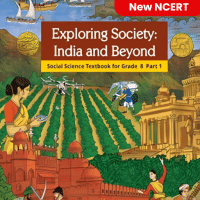Class 8 Exam > Class 8 Questions > Following is not a database modela)Network Da...
Start Learning for Free
Following is not a database model
- a)Network Database Model
- b)Relational Database Model
- c)Object Oriented Database Model
- d)None
Correct answer is option 'C'. Can you explain this answer?
Verified Answer
Following is not a database modela)Network Database Modelb)Relational ...
Explanation:
The correct answer is C: Object Oriented Database Model.
Here is a detailed explanation:
1. Network Database Model: This model is a type of database model that represents data in a graph structure, where records are connected through various relationships. It is based on the concept of a network and allows for complex relationships between data elements.
2. Relational Database Model: This model is based on the concept of tables, where data is organized into rows and columns. It uses the relational algebra to perform operations on the data, and it enforces data integrity through various constraints.
3. Object Oriented Database Model: This model is based on the object-oriented programming paradigm, where data is represented as objects that encapsulate both data and behavior. It allows for complex data structures and supports inheritance, polymorphism, and encapsulation.
4. None: This option is not correct as it does not provide any information about the database model that is not included in the other options.
In summary, the correct answer is C: Object Oriented Database Model, as it is not a type of database model.
View all questions of this test
The correct answer is C: Object Oriented Database Model.
Here is a detailed explanation:
1. Network Database Model: This model is a type of database model that represents data in a graph structure, where records are connected through various relationships. It is based on the concept of a network and allows for complex relationships between data elements.
2. Relational Database Model: This model is based on the concept of tables, where data is organized into rows and columns. It uses the relational algebra to perform operations on the data, and it enforces data integrity through various constraints.
3. Object Oriented Database Model: This model is based on the object-oriented programming paradigm, where data is represented as objects that encapsulate both data and behavior. It allows for complex data structures and supports inheritance, polymorphism, and encapsulation.
4. None: This option is not correct as it does not provide any information about the database model that is not included in the other options.
In summary, the correct answer is C: Object Oriented Database Model, as it is not a type of database model.
Most Upvoted Answer
Following is not a database modela)Network Database Modelb)Relational ...
Understanding Database Models
Database models are essential frameworks that define how data is stored, organized, and manipulated within a database management system. Among the common types of database models are the Network Database Model, Relational Database Model, and Object-Oriented Database Model.
Network Database Model
- This model allows multiple relationships between entities, resembling a graph structure.
- Data can be accessed in multiple ways, making it flexible and efficient for certain applications.
Relational Database Model
- The most widely used model, it organizes data into tables (relations).
- Each table consists of rows and columns, making data retrieval straightforward through structured query language (SQL).
Object-Oriented Database Model
- This model integrates object-oriented programming principles with database technology.
- It allows the storage of objects, including data and methods, but it is not as commonly recognized as the primary database models.
Why Option 'C' is Correct
- While the Object-Oriented Database Model is indeed a database model, it is often less emphasized compared to the Network and Relational models.
- Therefore, stating "None" as the answer may suggest a misunderstanding, as all options represent valid database models.
In summary, the correct answer is not 'C' because the Object-Oriented Database Model is indeed a recognized database model. If your query pertains to a different context or classification, please clarify for a more accurate exploration.
Database models are essential frameworks that define how data is stored, organized, and manipulated within a database management system. Among the common types of database models are the Network Database Model, Relational Database Model, and Object-Oriented Database Model.
Network Database Model
- This model allows multiple relationships between entities, resembling a graph structure.
- Data can be accessed in multiple ways, making it flexible and efficient for certain applications.
Relational Database Model
- The most widely used model, it organizes data into tables (relations).
- Each table consists of rows and columns, making data retrieval straightforward through structured query language (SQL).
Object-Oriented Database Model
- This model integrates object-oriented programming principles with database technology.
- It allows the storage of objects, including data and methods, but it is not as commonly recognized as the primary database models.
Why Option 'C' is Correct
- While the Object-Oriented Database Model is indeed a database model, it is often less emphasized compared to the Network and Relational models.
- Therefore, stating "None" as the answer may suggest a misunderstanding, as all options represent valid database models.
In summary, the correct answer is not 'C' because the Object-Oriented Database Model is indeed a recognized database model. If your query pertains to a different context or classification, please clarify for a more accurate exploration.

|
Explore Courses for Class 8 exam
|

|
Question Description
Following is not a database modela)Network Database Modelb)Relational Database Modelc)Object Oriented Database Modeld)NoneCorrect answer is option 'C'. Can you explain this answer? for Class 8 2025 is part of Class 8 preparation. The Question and answers have been prepared according to the Class 8 exam syllabus. Information about Following is not a database modela)Network Database Modelb)Relational Database Modelc)Object Oriented Database Modeld)NoneCorrect answer is option 'C'. Can you explain this answer? covers all topics & solutions for Class 8 2025 Exam. Find important definitions, questions, meanings, examples, exercises and tests below for Following is not a database modela)Network Database Modelb)Relational Database Modelc)Object Oriented Database Modeld)NoneCorrect answer is option 'C'. Can you explain this answer?.
Following is not a database modela)Network Database Modelb)Relational Database Modelc)Object Oriented Database Modeld)NoneCorrect answer is option 'C'. Can you explain this answer? for Class 8 2025 is part of Class 8 preparation. The Question and answers have been prepared according to the Class 8 exam syllabus. Information about Following is not a database modela)Network Database Modelb)Relational Database Modelc)Object Oriented Database Modeld)NoneCorrect answer is option 'C'. Can you explain this answer? covers all topics & solutions for Class 8 2025 Exam. Find important definitions, questions, meanings, examples, exercises and tests below for Following is not a database modela)Network Database Modelb)Relational Database Modelc)Object Oriented Database Modeld)NoneCorrect answer is option 'C'. Can you explain this answer?.
Solutions for Following is not a database modela)Network Database Modelb)Relational Database Modelc)Object Oriented Database Modeld)NoneCorrect answer is option 'C'. Can you explain this answer? in English & in Hindi are available as part of our courses for Class 8.
Download more important topics, notes, lectures and mock test series for Class 8 Exam by signing up for free.
Here you can find the meaning of Following is not a database modela)Network Database Modelb)Relational Database Modelc)Object Oriented Database Modeld)NoneCorrect answer is option 'C'. Can you explain this answer? defined & explained in the simplest way possible. Besides giving the explanation of
Following is not a database modela)Network Database Modelb)Relational Database Modelc)Object Oriented Database Modeld)NoneCorrect answer is option 'C'. Can you explain this answer?, a detailed solution for Following is not a database modela)Network Database Modelb)Relational Database Modelc)Object Oriented Database Modeld)NoneCorrect answer is option 'C'. Can you explain this answer? has been provided alongside types of Following is not a database modela)Network Database Modelb)Relational Database Modelc)Object Oriented Database Modeld)NoneCorrect answer is option 'C'. Can you explain this answer? theory, EduRev gives you an
ample number of questions to practice Following is not a database modela)Network Database Modelb)Relational Database Modelc)Object Oriented Database Modeld)NoneCorrect answer is option 'C'. Can you explain this answer? tests, examples and also practice Class 8 tests.

|
Explore Courses for Class 8 exam
|

|
Signup for Free!
Signup to see your scores go up within 7 days! Learn & Practice with 1000+ FREE Notes, Videos & Tests.


















